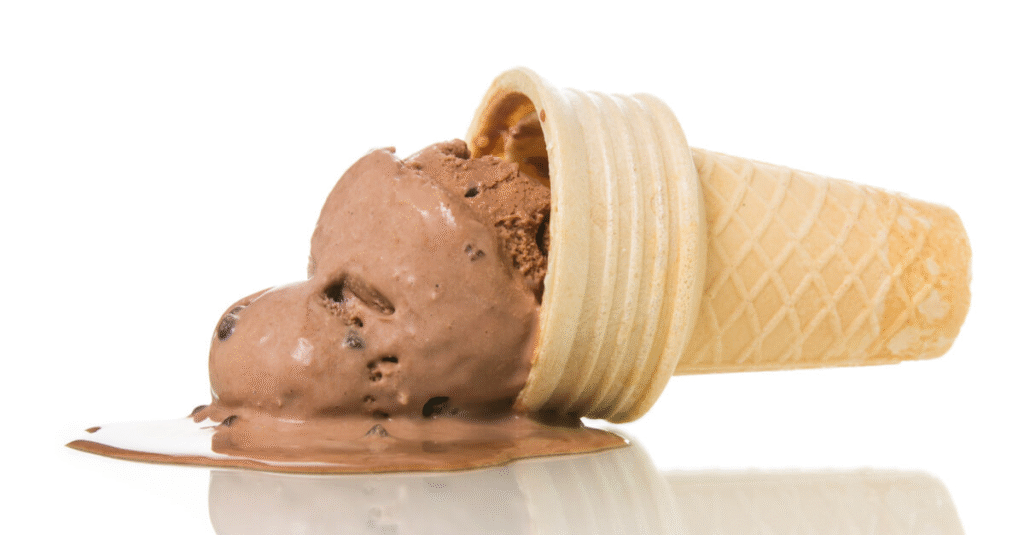Summer’s Sweetest Dilemma
There’s a universal joy in clutching an ice cream cone on a sweltering summer day. But that joy often comes with a mess—dripping cream down your hand, sagging scoops threatening to escape, and a frantic scramble to eat it before it melts into a puddle. For children, it’s often a race lost to gravity. For parents, it’s a guaranteed sticky cleanup. It’s one of life’s simple pleasures tainted by an age-old problem. But what if science could change the rules of this summertime game?
Enter the Unmelting Marvel
Several years ago, social media exploded with news of a curious creation from Japan: an ice pop that didn’t melt, even under intense heat. Kanazawa Ice, a manufacturer based in the city of the same name, had developed both popsicles and soft-serve ice cream that refused to turn into a drippy mess. Videos showed people holding cones under hot lamps or in direct sunlight—no puddles, no panic. For those who have watched their frozen treat succumb to the sun in seconds, this was revolutionary. But how did they do it?
Polyphenols to the Rescue
The secret behind this seemingly magical ice cream lies in polyphenols—antioxidant compounds found in fruits like strawberries and grapes. These molecules interact with fat and water, helping to stabilize the structure of the ice cream. Instead of collapsing under heat, the polyphenol-rich mixture maintained its shape, texture, and appeal. In essence, the scientists had re-engineered ice cream to be more resilient, without losing its charm.
The Science of Stability
Traditionally, ice cream owes its delicate structure to a careful balance of cream, sugar, and air, churned in a cold drum that scrapes off thin frozen layers. This churning prevents large, gritty ice crystals from forming. Yet any minor disruption—say, the treat melting slightly and then refreezing—can ruin the texture. The result? Jagged, crunchy crystals instead of smooth, velvety bliss. It’s a familiar disappointment, especially after a long trip home from the grocery store.

Beyond Japan—Global Efforts
Kanazawa Ice isn’t the only player trying to solve the melt problem. Around the world, food scientists are exploring various stabilizers—from plant fibers to proteins—that can improve texture and reduce melt rates. These additions work by binding water and fat more effectively, creating a more robust matrix. However, while such stabilizers can help ice cream hold its shape a bit longer, they still need cold storage. We’re not quite at the point where you can toss a cone
Taste Versus Technology
One challenge remains: taste. Adding too many stabilizers or polyphenols can alter the flavor, turning a beloved treat into a scientific experiment gone wrong. Consumers want creamy, indulgent ice cream—not something that feels like plastic or tastes too herbal. Balancing longevity with deliciousness is the key. For now, most manufacturers use a moderate approach, improving stability without compromising the classic sensory experience we crave.
A Lesson for Youth—Innovation from Simple Problems
For young minds fascinated by science and the everyday world, the story of melt-resistant ice cream offers a powerful lesson: innovation often begins with a simple problem. Whether it’s a dripping cone or a soggy sandwich, creative solutions require curiosity, persistence, and a willingness to explore new ideas. Science doesn’t always mean rockets or robots—sometimes it’s about making life a little less sticky and a lot more fun.

What’s Next in Frozen Futures?
So, will unmelting ice cream become the norm? Perhaps not immediately. While Kanazawa Ice’s products are intriguing, they’re not yet widespread. Still, the potential is there. As climate change raises temperatures and outdoor dining grows more popular, demand for longer-lasting frozen treats may rise. For now, we’ll savor each quickly melting scoop—and dream of a future where ice cream lasts as long as our summer adventures.
















